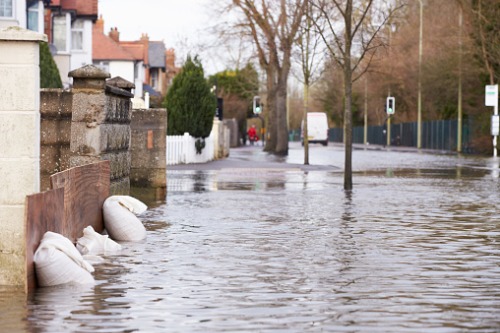Homebuyers should budget for added costs as natural disasters become more frequent

While US home prices have been rising at a breakneck pace in 2020, sales price growth of homes in disaster-prone areas has been on a downturn over the past few years.
The price growth rate of homes in high-risk flood areas was 5% lower than in similar areas with less risk, according to a report released Monday by realtor.com. Nationally, home prices have been seeing double-digit percentage growth since August. However, several analysts forecast a slowdown in home price growth, especially for homes in areas at high risk of natural disasters.
“As the impacts of climate change and worsening natural disasters become more well-known, it’s natural for home shoppers to take these factors into account when deciding the purchase price of a home, and tools that make information about these risks more available to buyers will help them make good choices,” said realtor.com Chief Economist Danielle Hale.
Over the last five years, the sales price of homes with severe or extreme risk of flooding appreciated by 25% per square foot. This is compared to 29% for homes with a moderate or major risk, and 30% for homes with minimal or low risk.
Realtor.com’s report highlighted that the impact of flood risk on home prices appears to be getting more pronounced over time. In 2014, the home price growth of high-risk properties in 33 of the 78 counties that had hurricane-related declarations increased slower than those less at risk. Forty counties continued to experience this trend in 2019, which was most apparent in Delaware, Florida, Massachusetts, and Maryland.
The report also suggests that home prices are more affected after an incredibly destructive season. For example, after Hurricane Sandy and other storms devastated millions of homes in the 2012 hurricane season, price growth for properties in severe and extreme risk areas fell further behind lower-risk homes.
Similarly, the price gap between homes in fire-prone areas was 3%. Prices of California homes within a one-mile radius of historical fire perimeters rose by 32% versus the 35% for other properties in the same county. To date, prices for homes in historically fire-prone areas was up by 2.9%, compared to 5.2% for homes without risk.
The price gap was even more apparent in Lake Solano, Monterey, Los Angeles, and Sonoma counties over the five-year study period, according to realtor.com.
“When buying a home in a flood or fire-prone area, home shoppers should budget for the added costs of home insurance, mitigation practices and potential losses, which can add to the total cost of ownership for the home,” Hale said.



